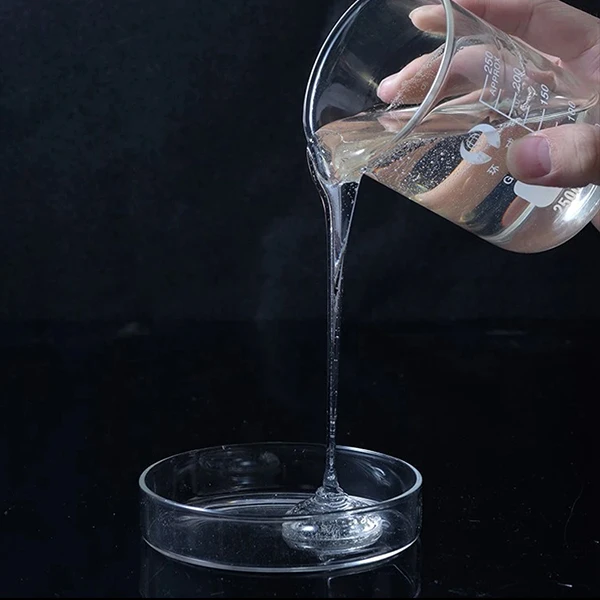Exploring Hydroxypropyl Methylcellulose A Versatile Polymer in Modern Applications
Hydroxypropyl Methylcellulose (HPMC) is a water-soluble polymer derived from cellulose, a natural polymer obtained from plant cell walls. It is an essential ingredient in various industries due to its unique properties, which include excellent film-forming abilities, thickening and stabilizing properties, and strong binding capabilities. This article delves into the chemistry, applications, and benefits of HPMC, highlighting why it has become a popular choice in numerous fields.
Chemistry of Hydroxypropyl Methylcellulose
HPMC is synthesized through the chemical modification of cellulose, involving the substitution of hydroxyl groups on the cellulose backbone with hydroxypropyl and methyl groups. This modification enhances its solubility in water while maintaining the structural integrity of cellulose. The ratio of hydroxypropyl to methyl substitutions can be adjusted, producing various grades of HPMC that have tailored properties suitable for specific applications.
Applications Across Industries
1. Pharmaceutical Industry One of the most significant applications of HPMC is in the pharmaceutical sector, where it is used as a binder, thickener, and controlled-release agent in tablet formulations. Its ability to form gels in the presence of water makes it ideal for coatings and extended-release formulations. HPMC is also utilized in ophthalmic solutions due to its excellent lubricating properties, helping in the treatment of dry eye syndrome.
2. Food Industry In the food industry, HPMC acts as a food additive for thickening, stabilization, and emulsification. It is commonly used in low-fat and reduced-calorie products as a fat replacer, improving texture and mouthfeel. HPMC is also utilized in gluten-free baking, improving the dough's strength and shelf life.
3. Construction and Coatings The construction sector employs HPMC in cement-based products and adhesives. Its water-retaining properties prevent rapid drying of mortars and plasters, allowing improved workability and adhesion. Additionally, HPMC is used in paints and coatings as a thickener and suspending agent, enhancing the product’s stability and application properties.
chemic cellulos hpmc hydroxypropyl methyl

4. Cosmetics and Personal Care HPMC is widely used in cosmetic formulations, acting as a thickening agent in shampoos, conditioners, and lotions. Its compatibility with various ingredients leads to stable and aesthetically pleasing products. Moreover, HPMC provides moisture retention, benefiting skin and hair care formulations.
Benefits of HPMC
The versatility of HPMC lies in its wide range of benefits
- Biocompatibility As a derivative of cellulose, HPMC is generally recognized as safe, making it suitable for use in pharmaceuticals and food products. - Customization Different grades of HPMC can be tailored to meet specific viscosity and solubility requirements, allowing manufacturers to select the ideal product for their applications.
- Environmental Impact Being derived from renewable resources, HPMC is considered more environmentally friendly compared to synthetic polymers.
- Functional Properties HPMC imparts desirable properties such as improved texture, stability, and controlled release, which are crucial for the efficacy of many products.
Conclusion
Hydroxypropyl Methylcellulose is a powerful and versatile polymer that plays a critical role in various industries, from pharmaceuticals to food production and beyond. Its unique chemical properties, coupled with its adaptability to meet diverse formulation needs, underscore its importance in modern applications. As research continues to explore new uses and modifications of HPMC, its relevance in our everyday lives is bound to grow, paving the way for innovative solutions across multiple sectors.
-
Rdp Powder: Key Considerations for Wholesalers in the Building Materials IndustryNewsJul.08,2025
-
Key Considerations for Wholesalers: Navigating the World of Hpmc - Based ProductsNewsJul.08,2025
-
Hpmc Detergent: Key Considerations for WholesalersNewsJul.08,2025
-
Key Considerations for Wholesalers: China Hpmc For Tile Adhesive, Coating Additives, Concrete Additives, and MoreNewsJul.08,2025
-
Crucial Considerations for Wholesalers: Navigating the World of Construction MaterialsNewsJul.08,2025
-
Key Considerations for Wholesalers Sourcing Additive For Cement, Additive For Concrete, Additive For Putty from Additive Manufacturer Shijiazhuang Gaocheng District Yongfeng Cellulose Co., Ltd.NewsJul.08,2025




